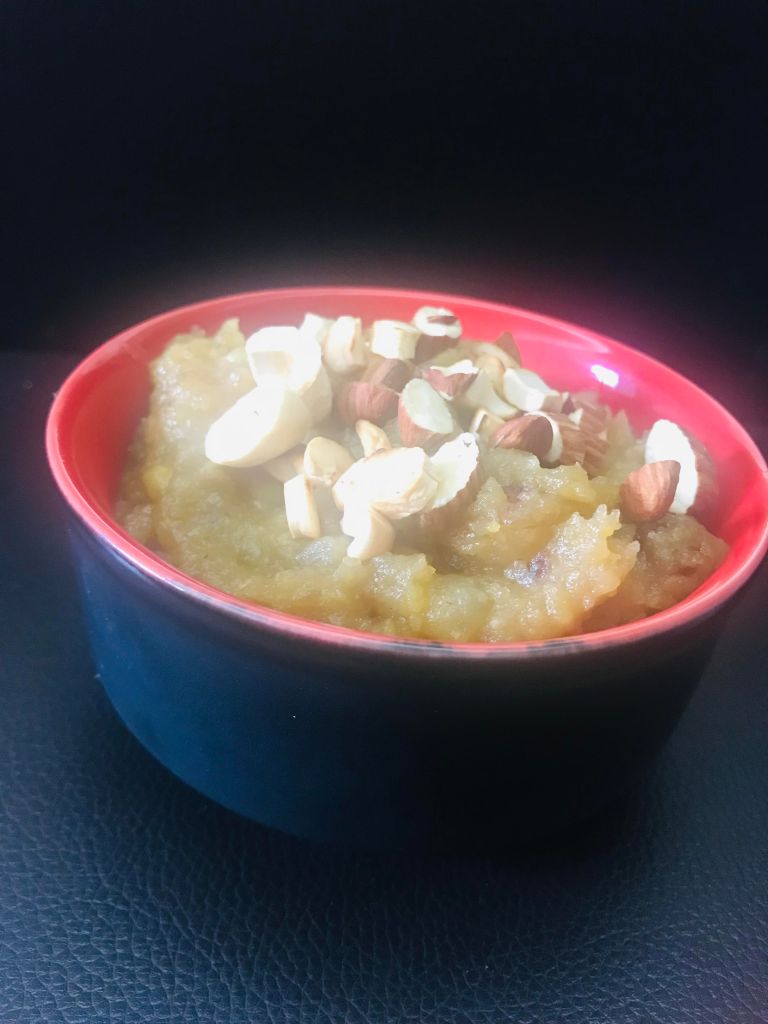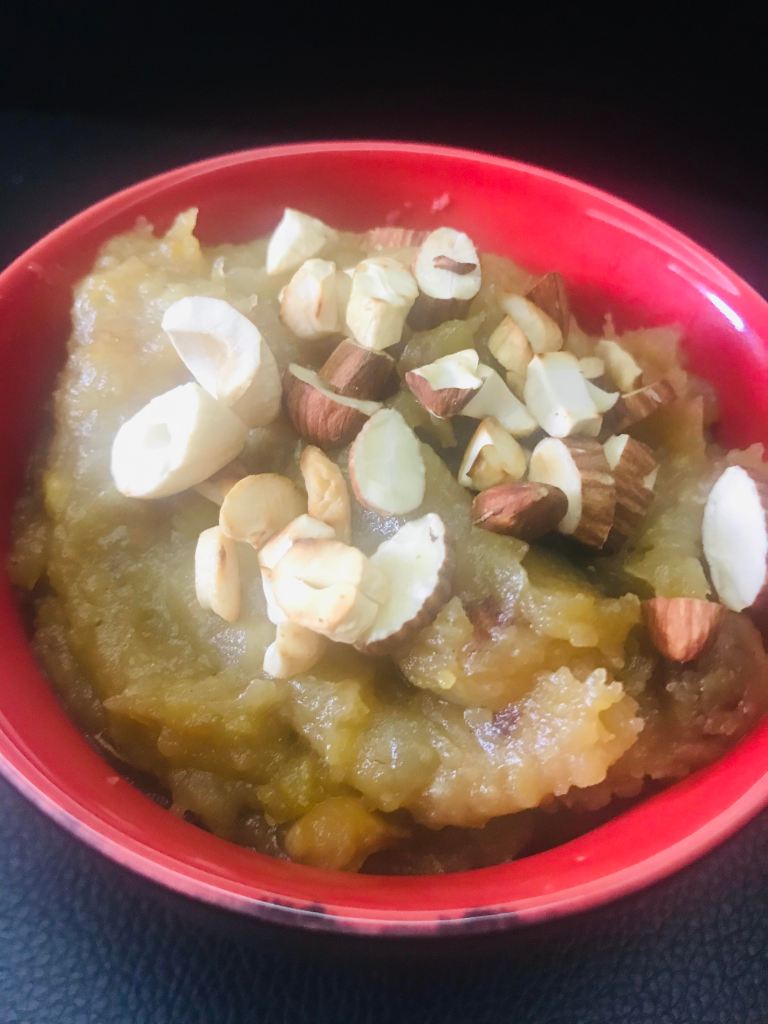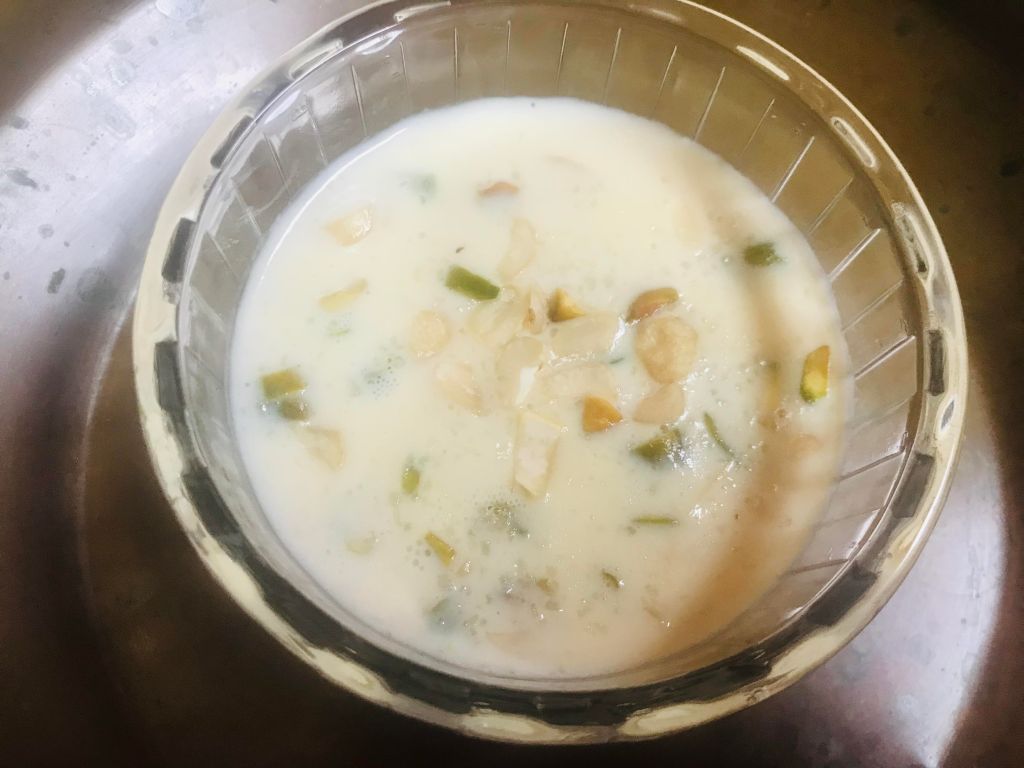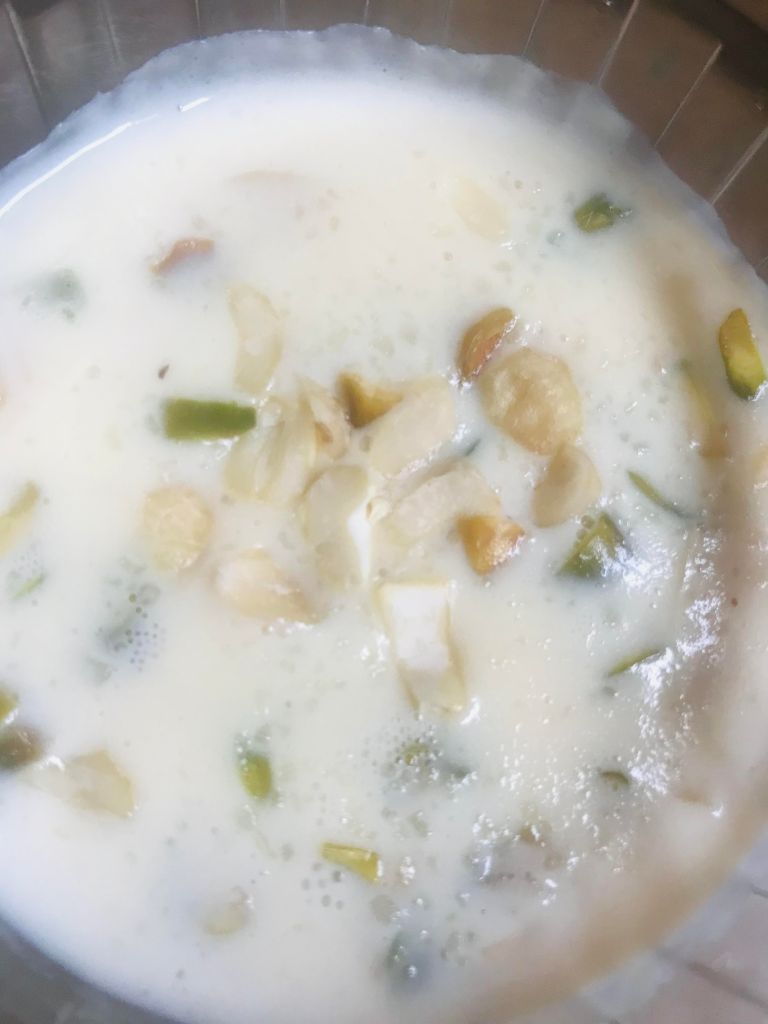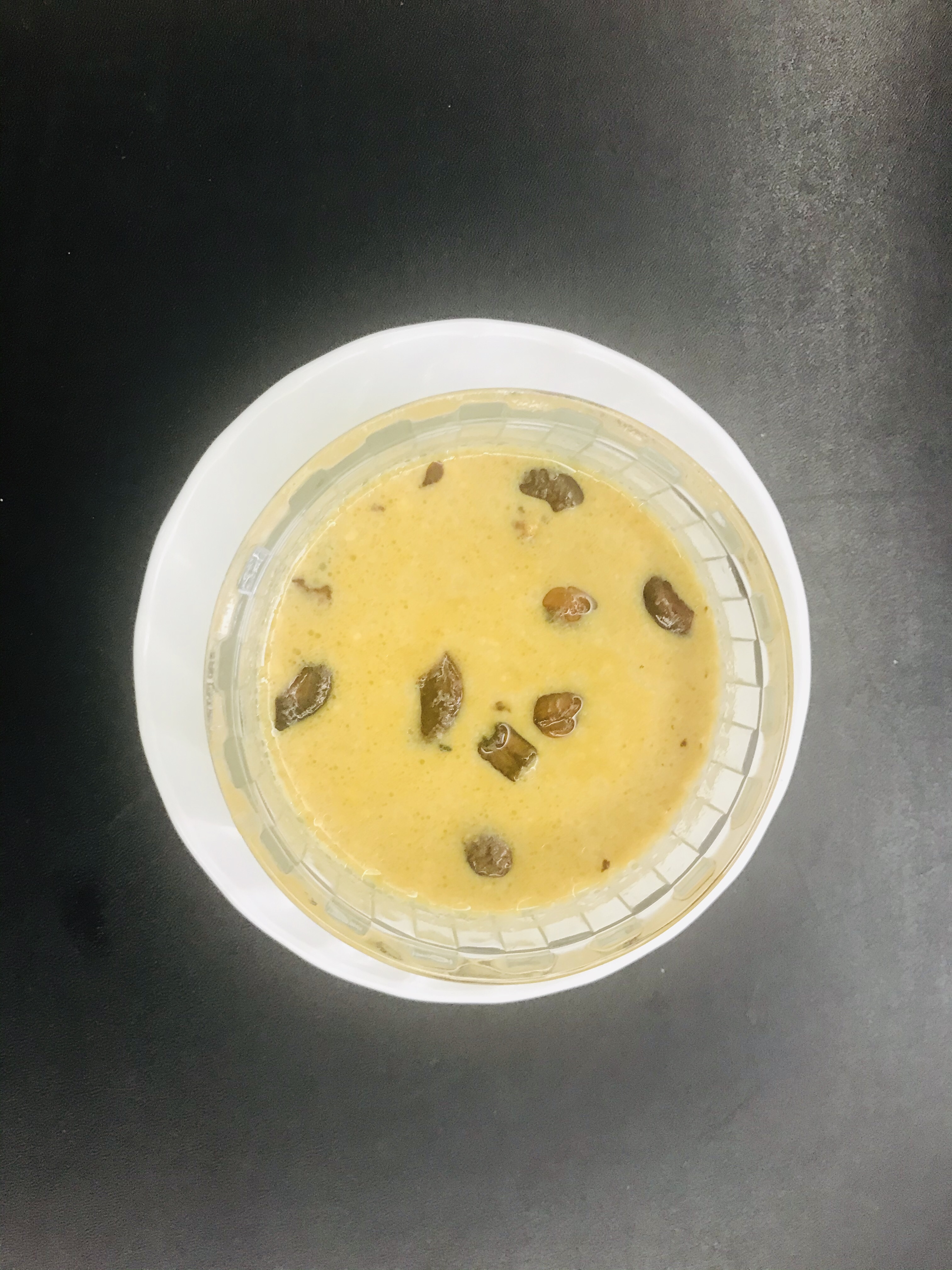Happy New Year! Here’s wishing every one of you a year that’s filled with love, hope, happiness and positivity!
And to start the new year, here’s a sweet dish that I made some time ago. I had many apples at home, which would all start to go bad at the same time. So instead of requesting everyone to eat them, I decided to make apple halwa with some of them. It was delicious and is something I will make again when I am craving something sweet.
Apple Halwa
Ingredients:
- 3 medium-sized red apples
- 1.5 tbsp ghee
- ¼ cup + 2 tbsp sugar, brown sugar, or jaggery
- ½ tsp ground cinnamon
- 2 tbsp raisins
- 10–12 almonds and cashew nuts
Method:
- Peel and grate the apples and set them aside.
- Finely chop the almonds and cashew nuts.
- Heat the ghee in a pan over medium heat.
- Add the chopped nuts and once they are brown, remove them from the pan with a slotted spoon and keep them in a kitchen towel until later.
- Add the grated apples and cook, stirring occasionally, until softened and most of the liquid has evaporated. This should take about 7 to 8 minutes.
- Add the sugar or jaggery and mix well.
- Once the sugar or jaggery has melted into the apple, add the cinnamon and continue cooking, stirring constantly, until the mixture thickens and pulls away from the sides of the pan, which should take about 5–7 minutes more.
- If the apples are sour, you may need to add more sweetener to taste and adjust the sweetness if needed.
- Add the raisins, almonds and cashew nuts, keeping some aside to garnish and mix well.
- Serve warm, garnished with chopped nuts.
Notes:
- Use any variety of red apples you like, but sweet and crisp apples will work best.
- For a smoother texture, the apples can be blended after cooking before adding them back to the pan.
- This halwa can be stored in an airtight container in the refrigerator for up to 3 days.






